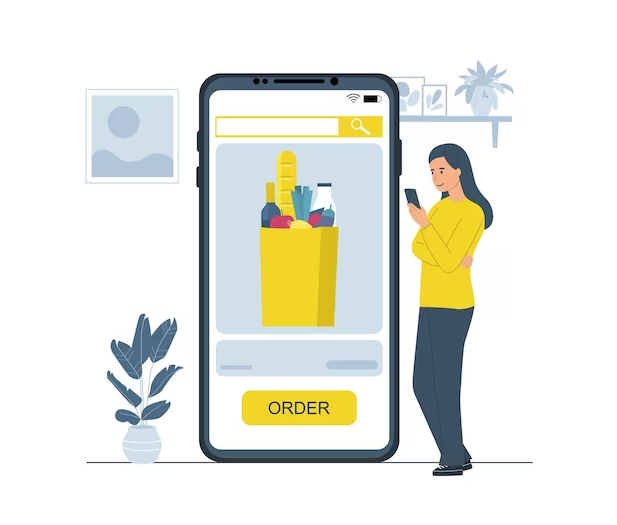
In today’s fast-paced world, the demand for convenient and efficient grocery delivery services continues to rise. As consumers increasingly prioritize convenience and time-saving solutions, businesses are seeking innovative ways to meet their needs. One such solution is the development of white-label grocery delivery apps. These customizable platforms offer businesses the opportunity to enter the grocery delivery market quickly and cost-effectively, while still providing a tailored experience for their customers.
In this guide, we will explore the process of building a white-label grocery delivery app, from initial planning and market research to the final launch and promotion. By understanding the steps involved and key considerations for success, businesses can leverage white-label solutions to create a seamless and efficient grocery delivery experience for their customers. Let’s delve into the world of white-label grocery delivery apps and discover how businesses can tap into this growing market opportunity.
Understanding White-label Grocery Delivery Apps
White-label grocery delivery apps offer businesses a customizable and cost-effective solution to enter the rapidly growing market of grocery delivery services. These apps, developed by third-party providers, can be branded and deployed as the business’s own, providing the same functionality and features as custom-built apps. With the ability to customize branding and features, businesses can tailor the app to meet their specific requirements and enhance the customer experience. Leveraging white-label solutions saves time and resources, making it an attractive option for businesses looking to capitalize on the convenience and efficiency of grocery delivery services.
What is a White-label Grocery Delivery App?
A grocery ordering platform is a customizable solution that businesses can brand and deploy as their own. It offers the same functionality and features as a custom-built app but is developed by a third-party provider and licensed to businesses for rebranding.
Advantages of White-label Solutions
- Cost-effectiveness: Building a white-label app is typically more affordable than developing a custom solution from scratch.
- Time-saving: White-label solutions come with pre-built features and functionalities, reducing development time.
- Customization: Businesses can customize the app to reflect their brand identity and meet their specific requirements.
- Scalability: White-label solutions are designed to be scalable, allowing businesses to accommodate growth and handle increased user traffic without major infrastructure changes. This scalability ensures that the app can grow with the business and adapt to changing market demands.
- Reliability: White-label solutions are developed and tested by experienced providers, ensuring reliability and stability. Businesses can trust that the app will perform consistently and meet customer expectations, minimizing downtime and technical issues.
- Support and Maintenance: White-label solution providers typically offer ongoing support and maintenance services, including updates, bug fixes, and technical assistance. This ensures that the app remains up-to-date and functional, allowing businesses to focus on their core operations without worrying about technical issues.
- Faster Time-to-Market: By leveraging pre-built frameworks and functionalities, businesses can significantly reduce the time required to develop and launch their app. This faster time-to-market allows businesses to capitalize on market opportunities more quickly and stay ahead of competitors.
- Access to Expertise: White-label solution providers often have specialized expertise and knowledge in app development and delivery. By partnering with a reputable provider, businesses can tap into this expertise and benefit from best practices, industry insights, and innovation in the development process.
Steps to Build a White-label Grocery Delivery App
1. Market Research and Planning
Before diving into development, conduct thorough market research to understand customer needs, competitor offerings, and market trends. Define your target audience, identify key features, and outline your business goals and objectives.
Read more:- North Las Vegas Tree Service Pros
2. Choose a White-label Solution Provider
Research and evaluate white-label solution providers based on factors such as reputation, experience, pricing, features, and customer support. Choose a provider that aligns with your business needs and requirements.
3. Customize the App
Work closely with the solution provider to customize the app to reflect your brand identity and meet your specific requirements. This may include branding elements, color schemes, logo placement, and feature customization.
4. Integrate Essential Features
Ensure that the app includes essential features for a seamless grocery ordering and delivery experience. This may include:
- User registration and authentication
- Product catalog with search and filter options
- Shopping cart and checkout functionality
- Payment gateway integration
- Order tracking and status updates
- Customer support and feedback mechanisms
5. Test the App
Thoroughly test the app across different devices and platforms to ensure functionality, usability, and performance. Identify and address any bugs or issues before launching the app to the public.
6. Launch and Promote the App
Once testing is complete, launch the app on relevant app stores (e.g., Apple App Store, Google Play Store). Develop a marketing and promotional strategy to generate awareness and drive downloads. Utilize social media, email marketing, influencer partnerships, and other channels to reach your target audience.
Key Considerations for Success
1. User Experience (UX)
Prioritize user experience throughout the development process. The app should be intuitive, easy to navigate, and visually appealing. Consider user feedback and iterate on the design to continually improve the user experience.
2. Scalability
Choose a white-label solution provider that offers scalability to accommodate future growth and expansion. Ensure that the app can handle increased user traffic and transaction volume as your business grows.
3. Security
Implement robust security measures to protect user data, payment information, and other sensitive information. Utilize encryption, secure authentication methods, and compliance with data protection regulations (e.g., GDPR) to safeguard user privacy and security.
Conclusion
In conclusion, the development of a white-label grocery delivery app presents businesses with an invaluable opportunity to capitalize on the burgeoning demand for convenient and seamless grocery delivery services. By embracing white-label solutions, businesses can not only streamline their operations and reduce costs but also enhance their brand presence and foster customer loyalty.
With the right strategy, careful planning, and attention to detail, businesses can leverage white-label apps to position themselves as leaders in the competitive grocery ordering platform landscape. As the grocery delivery market continues to evolve, white-label solutions offer a scalable and adaptable approach to meet the ever-changing needs and preferences of consumers, driving sustained growth and success for businesses in the digital age.



